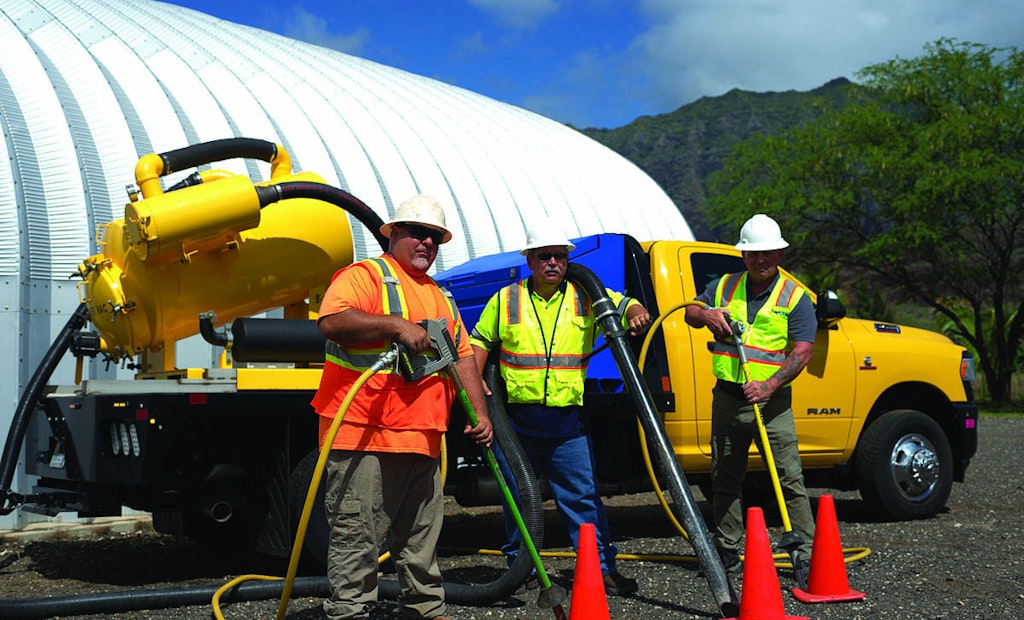
Employees at Hawaii Private Locators pose with AirSpade pneumatic excavators and a Pacific Tek truck-mounted PV150 portable vacuum machine. From left to right are: Dwayne Costa, field engineer; Dave Dickey, company owner; and Billy Massey, technician.
Workers at Hawaii Private Locators dig a lot of holes every year while locating underground utility lines.
In fact, employees do about 500 potholing jobs a year in order to expose and locate underground infrastructure without damaging the very things they’re striving to...





